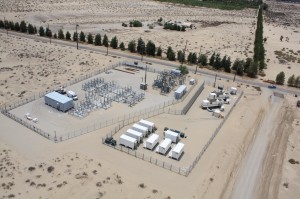SDG&E employed the Borrego Springs Microgrid because the transmission line that usually feeds the community had been damaged by lightning. SDG&E crews needed to replace or repair three transmission poles, which would usually require a 10-hour sustained outage to the entire community of Borrego Springs. However, SDG&E was able to call on the Borrego Springs Microgrid to avoid the impact of a major outage. The Borrego Springs Microgrid uses advanced technologies – including local power generation, energy storage, and automated switching – to create a more resilient local grid for the benefit of customers. The Microgrid is connected to the centralized energy grid, but can disconnect from the larger grid and function independently during emergencies, supplying vital electricity to the local community through its onsite resources.
UCSD’s microgrid performed a similar function back in 2011, helping to avert a worse power outage for San Diego. But this Borrego Springs example is unique.
Microgrids will increasingly become a critical resilience strategy as climate change unleashes more extreme weather, plus more dependence on intermittent renewables.
As they say, the future is already here, just not widely distributed yet.
Leave a Reply
You must be logged in to post a comment.



